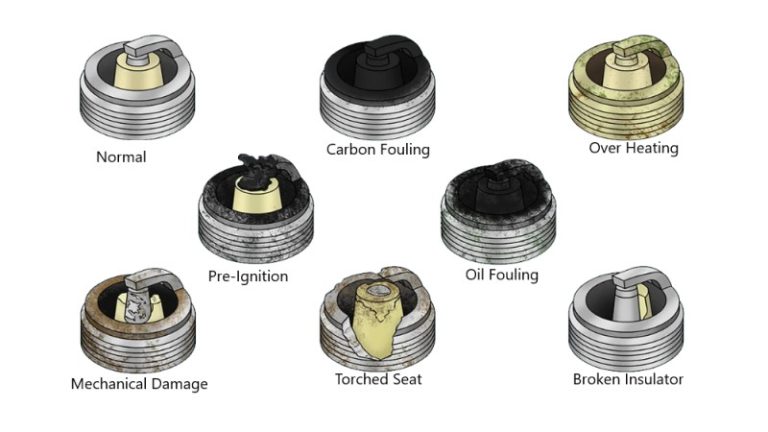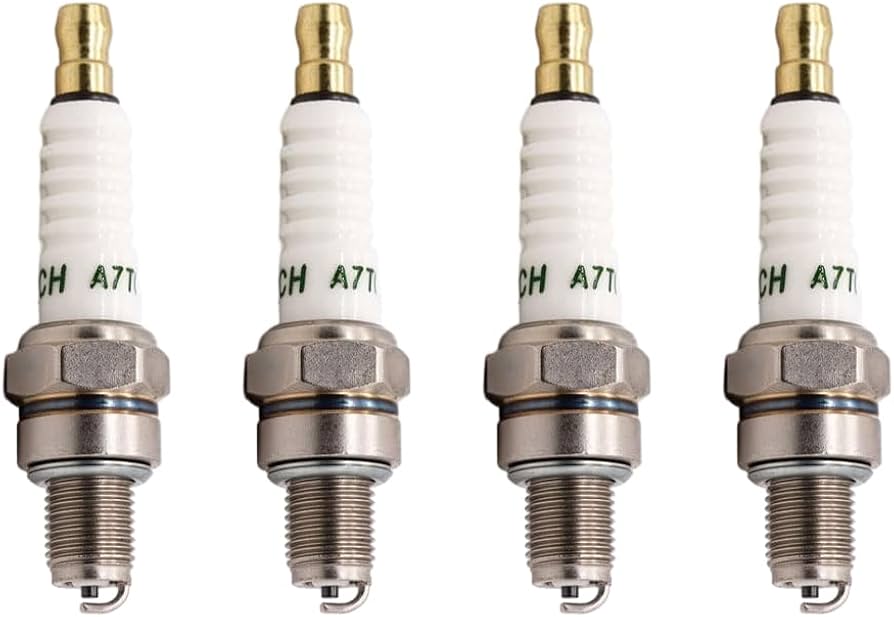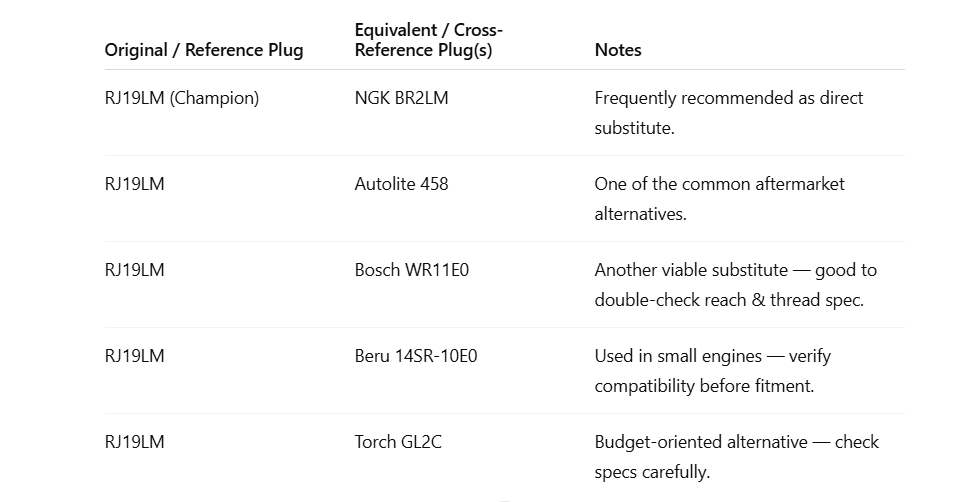How to read spark plugs: Check the color of the insulator. Light tan indicates proper engine performance, while black soot or oily deposits suggest issues like a rich fuel mixture or worn components.
Reading spark plugs is one of the most valuable skills every car owner and mechanic should master. Spark plugs are an essential component of the engine’s ignition system, and their condition can reveal important information about the engine’s performance and health. When spark plugs begin to show signs of wear or damage, they can cause a wide range of engine issues, such as poor fuel efficiency, misfires, and difficulty starting. Fortunately, knowing how to read spark plugs can help you diagnose these issues before they become serious.
In this guide, we will explain how to read spark plugs, what different spark plug appearances mean, and how you can use this information to maintain the engine in top condition.

Contents
The Anatomy of a Spark Plug
A typical spark plug has several key components, each playing a crucial role in its function. Here’s a breakdown:
- Terminal: The terminal is the top part of the spark plug, where the ignition wire connects.
- Insulator: This is the ceramic part of the spark plug that insulates the central electrode and prevents the spark from escaping.
- Central Electrode: The central electrode conducts the spark from the ignition system to ignite the air-fuel mixture in the engine’s combustion chamber.
- Ground Electrode: The ground electrode completes the electrical circuit by providing a path for the spark to travel back to the engine.
- Shell: The outer metal casing, which is threaded into the engine’s cylinder head. It helps dissipate heat from the spark plug to keep the engine cool.
Knowing these parts is essential when it comes time to inspect your spark plugs. A closer look at these components will provide you with clues about your engine’s performance.
How to Read Spark Plugs
Once you remove the spark plugs from the engine, it’s time to examine them for specific signs of wear or damage. The color and condition of the insulator and electrodes can tell you a lot about what’s going on inside the engine.
1. Normal (Light Tan or Gray)
A spark plug with light tan or gray deposits indicates that the engine is operating at its optimal temperature. This is the ideal condition, showing that the engine is running smoothly with the correct air-fuel mixture and proper ignition timing. If your spark plug looks like this, you can rest easy knowing that everything is functioning as it should.
What to look for:
- Light tan or gray color
- Even wear across the electrodes and insulator
2. White or Chalky Appearance
A spark plug that has a white or chalky appearance is an indication that the engine is running too hot. This could be due to a lean air-fuel mixture or incorrect ignition timing. If the problem is not addressed, it could cause engine knocking, which could lead to serious damage.
What to look for:
- White or chalky deposits
- The insulator may appear cracked or worn down
- Excessive wear on the electrodes
3. Black, Sooty Deposits
If your spark plug has black, sooty deposits, this means the engine is running rich, or there is too much fuel in the air-fuel mixture. This condition can be caused by issues like clogged air filters, faulty fuel injectors, or an improperly adjusted carburetor. A rich mixture will decrease fuel efficiency and performance.
What to look for:
- Black, sooty deposits on the electrode or insulator
- Thick carbon buildup
- Possible misfiring or poor acceleration
4. Wet or Oily Deposits
Wet or oily spark plugs usually indicate that oil is entering the combustion chamber. This can be caused by worn piston rings, valve seals, or a malfunctioning PCV valve. Oil contamination can cause fouling of the spark plugs, which in turn leads to misfires and poor engine performance.
What to look for:
- Oily or wet deposits on the spark plug
- Black or grayish color combined with oil contamination
- Strong odor of fuel or burning oil
5. Overheating (Melted or Glazed Insulator)
Overheating can occur if the engine is running too hot for prolonged periods. Signs of overheating on a spark plug include a melted or glazed appearance on the insulator. This can be caused by a number of issues such as incorrect heat range spark plugs, prolonged high engine temperatures, or improper ignition timing.
What to look for:
- Melted or glazed insulator
- Shiny or smooth surface on the spark plug’s insulator
- Cracked ceramic insulator
How to Remove and Inspect Spark Plugs
To properly inspect spark plugs, you first need to remove them from the engine. Here’s how:
- Prepare Your Vehicle: Turn off the engine and allow it to cool to avoid burns.
- Use the Right Tools: Use a spark plug socket wrench, extension bar, and ratchet to carefully remove each spark plug.
- Inspect Each Plug: Look at the color and condition of the insulator and electrodes. Compare them with the charts or examples provided.
- Clean the Spark Plugs: If you’re inspecting the plugs for reuse, gently clean any carbon buildup using a spark plug cleaner.
- Replace if Necessary: If you notice any serious damage or excessive wear, it’s best to replace the spark plugs.
Common Spark Plug Issues and Their Causes
Identifying the common issues that can affect spark plugs helps you diagnose and resolve engine problems more effectively. Below are some of the most frequent spark plug problems and their underlying causes –
| Spark Plug Issue | Possible Cause |
|---|---|
| Fouled Electrodes | Rich fuel mixture, poor ignition system |
| Overheating | Incorrect heat range, advanced ignition timing |
| Oil Deposits | Worn piston rings, valve seals, malfunctioning PCV valve |
| Carbon Deposits | Poor fuel quality, short trips, faulty fuel injectors |
| Glazed Insulator | Sustained high engine temperatures, incorrect timing |
Advanced Spark Plug Analysis
For those who want to go even deeper into diagnostics, there are advanced spark plug analysis techniques available:
- Spark Plug Cutaway: This method involves cutting open the spark plug to inspect the internal parts. This gives a detailed view of the combustion process and provides insights into engine health.
- Borescope Inspection: Using a borescope allows you to inspect the combustion chamber and spark plugs without removing the cylinder head. This is useful for more precise diagnosis.
- Compression Testing: A compression test can help identify whether there are issues with the piston rings or valves, which can affect spark plug performance.
How to Maintain the Spark Plugs
To ensure that your engine continues to run efficiently, regular spark plug maintenance is necessary. Here’s how you can maintain your spark plugs:
- Regular Inspections: Check your spark plugs at least every 30,000 miles or according to the manufacturer’s recommendation.
- Replace Spark Plugs: Replace spark plugs if they appear worn, damaged, or if they show signs of fouling or excessive buildup.
- Use Proper Spark Plugs: Always use the correct spark plug type and heat range as specified by the vehicle manufacturer.
- Clean the Spark Plugs: Regular cleaning can remove buildup and prevent misfires. Use a spark plug cleaner tool for best results.
Frequently Asked Questions
Here are some FAQs about how to read spark plugs –
1. How often should I check my spark plugs?
It’s recommended to check spark plugs every 30,000 miles or as specified in your vehicle’s owner manual.
2. Can I clean and reuse spark plugs?
Yes, you can clean spark plugs with a wire brush or spark plug cleaner if they’re in good condition. However, if they show signs of wear or fouling, it’s best to replace them.
3. What tools do I need to read spark plugs?
You’ll need a spark plug socket, extension bar, ratchet, and possibly a spark plug viewer or magnifying tool to properly inspect spark plugs.
4. Can reading spark plugs diagnose all engine problems?
While spark plug reading is helpful, it’s best used alongside other diagnostic tools like compression tests and visual inspection of the engine to pinpoint issues.
5. Should I replace all spark plugs at once?
Yes, replacing all spark plugs ensures even performance across all cylinders, which helps maintain engine efficiency.
Conclusion
Reading spark plugs is an essential skill for diagnosing engine problems and maintaining vehicle performance. Regular spark plug inspection provides valuable insights into the health of your engine and can help prevent larger, more costly repairs. By learning how to properly read and maintain the spark plugs, you can ensure that your engine runs efficiently and smoothly for years to come.
Always refer to your vehicle’s manufacturer guidelines when replacing or inspecting spark plugs, and consult with a professional mechanic if necessary. With this knowledge, you’re better equipped to keep the engine performing at its best!





